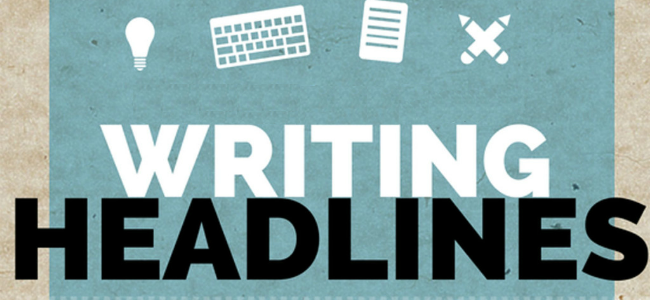What’s a headline? It’s the first and very often the only thing that people read. So, if you want them to read your article till the very end, you must make up awesome headlines. Hoa Loranger shares 5 tips how to write headlines that will surely convert.
1. A headline should work out of context.
People usually assume that headlines are connected with the associated story. But, according to Hoa, headlines fall out of context in the web (e.g. search results, social-media streams and so on). He also suggests that headlines must be solid and descriptive if stripped out of content.
Readers pay attention to visual and textual cues to understand whether the content is useful for them and don’t waste time on it, if it doesn’t make immediate sense. So, Loranger’s advice is to minimize cognitive load in order to maximize usability.
Think of headlines as microcontent which can be scanned and gives people a common idea of the article.
2. Give your readers useful information.
Users are likely to click on a heading that will give them some valuable information. Useful headings are special: they contain information that attracts users’ attention at once. Broad and generic headings don’t make you stand out from your competitors or give value.
Give readers something they don’t know yet and that will be a great benefit for them. Also, Hoa Loranger says that headings containing user-centric language are much more refreshing than ambiguous ones.
Make better, faster decisions with data visualization
Compare it with:
Data visualization helps you detect and prevent fraud faster
The second one is better as it is more “specific and provides a concrete benefit that might arouse the reader’s curiosity.”
3. Avoid cute vocabulary.
Try to use as few idioms and hype as possible as they are vague and blur meaning. It will also be difficult for nonnative English speakers to understand them. Make your headings straightforward, keeping to clarity and authenticity.
This variant…:
Increase productivity by 24% with XYZ
…is more preferable than this:
Get the most bang for your buck with XYZ
Every rule has an exception. It’s possible to use jargon when talking to a specialized audience.
4. Eliminate unnecessary words.
When we speak about headlines, it’s better to be concise. Change and edit headlines until there are no nonessential words anymore as short headlines require less cognitive effort, according to Hoa Loranger. Moreover, long ones are seldom scale well to variable container sizes. They are more likely to cut short for small screens.
5. Use solid keywords.
It’s the right way to get traffic to your site. Put them at the beginning as it will increase the chances that it will get noticed as readers pay most attention to the first few words.
Here are 2 headlines:
(1) Behold the new technologies for creating 3-D imagery
(2) Creating 3-D imagery gets easier with new technologies
The first one may not be noticed as keywords (creating 3-D imagery) are placed at the end.
Conclusion
If you want to create engaging headings, make them short, authentic, containing valuable information and keywords.





